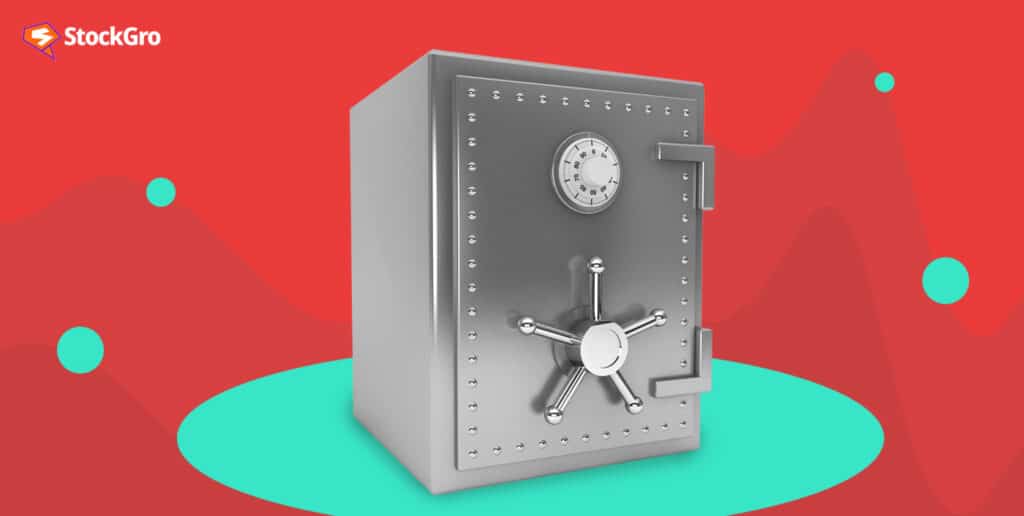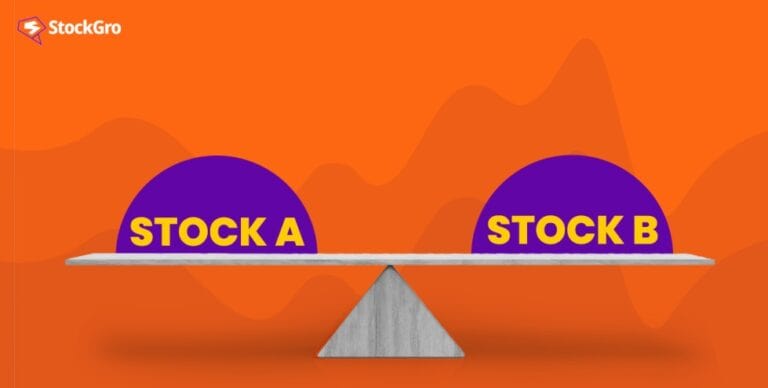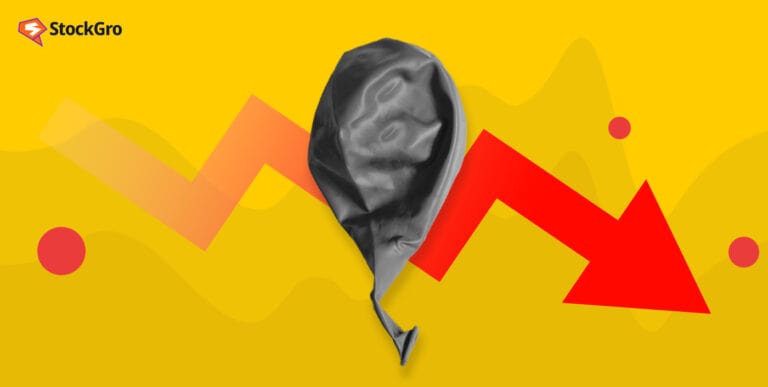
Imagine a world where you could invest your money and be 100% sure that you’ll get it back, along with some extra. Well, that’s what the term “risk-free rate of return” is all about. It’s the idea of investing your money where the risk is so low that it’s almost like storing your cash under a financial mattress. But does such a rate really exist?
Let’s dive into it.
What is the risk-free rate of return?
A risk-free rate of return is the hypothetical interest rate you’d earn on an investment that has absolutely zero risk. This theoretical rate serves as a foundational benchmark in the financial world, helping investors evaluate the attractiveness of various opportunities.
Imagine you have two investment options—one is a high-flying tech startup, while the other is a government bond.
The risk-free rate of return helps you figure out a big question – Is the chance to make more money from a risky startup worth taking a chance, especially when you could make some money for sure from a safer government bond?
In essence, the risk-free rate of return sets the bar for what an investor should at least aim to achieve with any investment.
You may also like: Interest rate risk – Meaning and risk management strategies.
The myth and reality of risk-free
There’s a reason we call the risk-free rate “theoretical.” In practice, no investment is entirely devoid of risk. Even the safest bet, like government bonds or Treasury bills, carries some minimal risks.
One of the most pervasive is inflation risk. Suppose you invest in a 10-year government bond with a 2% annual return. If inflation rates rise to 3%, the buying power of your returns would actually decrease over time despite the investment itself being “safe.”
Therefore, when financial experts talk about a “risk-free” rate, they are generally referring to investments that are as close as you can get to a guarantee in the complex and ever-changing landscape of financial markets.
What does the risk-free rate of return indicate?
Hearing the term “risk-free rate of return” might make you think you’ve found the golden ticket to investments. It sounds like you can earn money without losing any, right? Well, let’s dig a bit deeper to understand what’s actually involved.
Core components of risk-free rate of return
The idea behind the risk-free rate of return is built on three main pillars:
- Inflation
Holding onto money doesn’t mean its worth remains the same over time. Prices for things like food and housing usually go up, and this is called inflation. When considering a risk-free investment, it’s vital to think about how much prices will rise while you have your money invested.
- Rental rate
Though the rental rate might sound like it’s related to renting a house, here it means something different. The rental rate is the real money you earn from your investment. For instance, if you invest ₹100 and get back ₹105, that extra ₹5 is your rental rate. When an investment is described as “risk-free,” this means you are guaranteed to get this return without any hiccups.
- Investment risk
Everywhere you put your money carries some level of risk. However, in a risk-free rate of return, this risk is considered to be nonexistent. In theory, you’re not taking any risks that would result in a loss of the money you’ve invested.
Calculation of risk-free return
A common method to calculate the risk-free return is using a formula that finance folks call the Capital Asset Pricing Model or simply CAPM. This formula can help you understand what kind of return you should aim for, taking into account the risk level of your investment compared to the market.
Also Read: Key risks in investing in the stock market
Breaking down the formula
Here’s what the formula looks like:
Ra = Rf + [β x (Rm – Rf)]
Let’s decode what each component means:
Ra is the return you're hoping to get from the investment. β, often called beta, tells you how the investment's value is likely to change compared to the whole market. Rf is the risk-free rate, which is the number we are keen on. Rm is what you'd expect the market to return. The part that says (Rm - Rf) is often called the risk premium. It represents the extra return you'd want to make for taking on a higher risk than you would with a risk-free investment.
What is beta?
Beta is a sort of yardstick to measure how an investment behaves compared to the market. If beta is 1, the investment and the market are in sync. A beta higher than 1 means the investment is more likely to experience ups and downs, and a beta lower than 1 indicates less volatility.
Example of risk-free return
It’s almost impossible to find an investment that has zero risk. However, some investments come very close to being risk-free, and treasury bills are an excellent example.
To illustrate, let’s consider you’re an investor in India. You buy a treasury bill with a face value of Rs 100 at an issue price of Rs 98. When the bill matures, you will get back Rs 100. The risk-free rate of return in this example can be calculated based on the difference between the face value (Rs 100) and the issue price (Rs 98).
So, in this case, your almost risk-free return would be Rs 2, which might not sound like much, but remember, the risk involved is minuscule.
Risk-free investments
The term “risk-free” might be a bit of an exaggeration, but there are investments that are considered extremely safe. These are usually government-backed securities called government securities in India. These investments are considered safe because they are backed by the full faith and credit of the government.
Also Read: Risk management in stock market
Risk-free investments
| Country | Risk-Free Investment | Duration |
| United States | Treasury Bills | 3 months |
| India | Government Securities | Various |
| Germany | Bundesanleihen | Various |
| Switzerland | Swiss Confederation Bonds | Various |
Significance of Risk-Free Rate of Return
The risk-free rate of return is significant because it serves as a foundation in investment and financial decision-making. The risk-free rate of return provides a baseline using which investors can measure the performance of other, riskier assets.
When you assess the potential return of an investment, the risk-free rate acts as the minimum threshold. If an investment doesn’t surpass this threshold, it may not be worth the additional risk involved.
This rate is also crucial in financial modeling and valuation. For example, it is used as a key input in the CAPM, which helps calculate the expected return of an asset after considering its risk. By using the risk-free rate as a standard, CAPM allows investors to understand whether the potential return of an investment compensates for the risk involved.
The risk-free rate helps in determining the cost of capital for companies. Businesses often use this rate to decide the required rate of return on new projects. This helps them ensure that they invest only in ventures expected to yield returns above the risk-free rate.
Overall, the risk-free rate is an integral part of both individual investment strategies and corporate finance as it shapes multiple financial decisions and guides risk management practices.
Limitations of Risk-Free Rate
While the risk-free rate is an important tool in finance, it also has disadvantages. One major issue with a risk-free rate is that it’s tied to the economic conditions of the country issuing government bonds or securities. In stable, developed economies, government bonds like the U.S. Treasuries are considered risk-free.
However, in developing economies, political instability or fluctuating inflation rates can lead to higher risks even for government-backed investments and make these bonds less reliable. So, what’s labelled “risk-free” may still carry some risk.
Another limitation of a risk-free rate is the impact of inflation. The risk-free rate doesn’t take inflation into consideration. This means that even when a government bond offers a nominal rate that seems to be risk-free, the real return can be negative if inflation exceeds the interest you’ve earned. The purchasing power of your returns could decrease over time despite the safety of the investment. That’s why it’s important to distinguish between the nominal risk-free rate and the real risk-free rate, which factors in inflation.
Additionally, the risk-free rate varies across countries and periods. It is influenced by central bank policies and economic conditions, like low-interest rate environments where the risk-free rate might be so minimal that it barely offers any incentive for investors. This pushes investors to take more risk to gain higher returns. These limitations tell us that the risk-free rate works well as a baseline but you should always consider it in the context of inflation, economic stability, and central bank actions.
Conclusion
The term “risk-free rate of return” might sound like a guarantee, but remember, no investment is entirely without risk. However, it’s one of the safest options you have for investment.
It serves as a yardstick against which you can measure the returns of other, riskier investments.]
When you’re looking to invest, consider the risk-free rate as your starting point. Any investment offering higher returns should also clarify the extra risks involved.
Now you should have a clear understanding of what the risk-free rate of return is, why it’s important, and how to calculate it.

